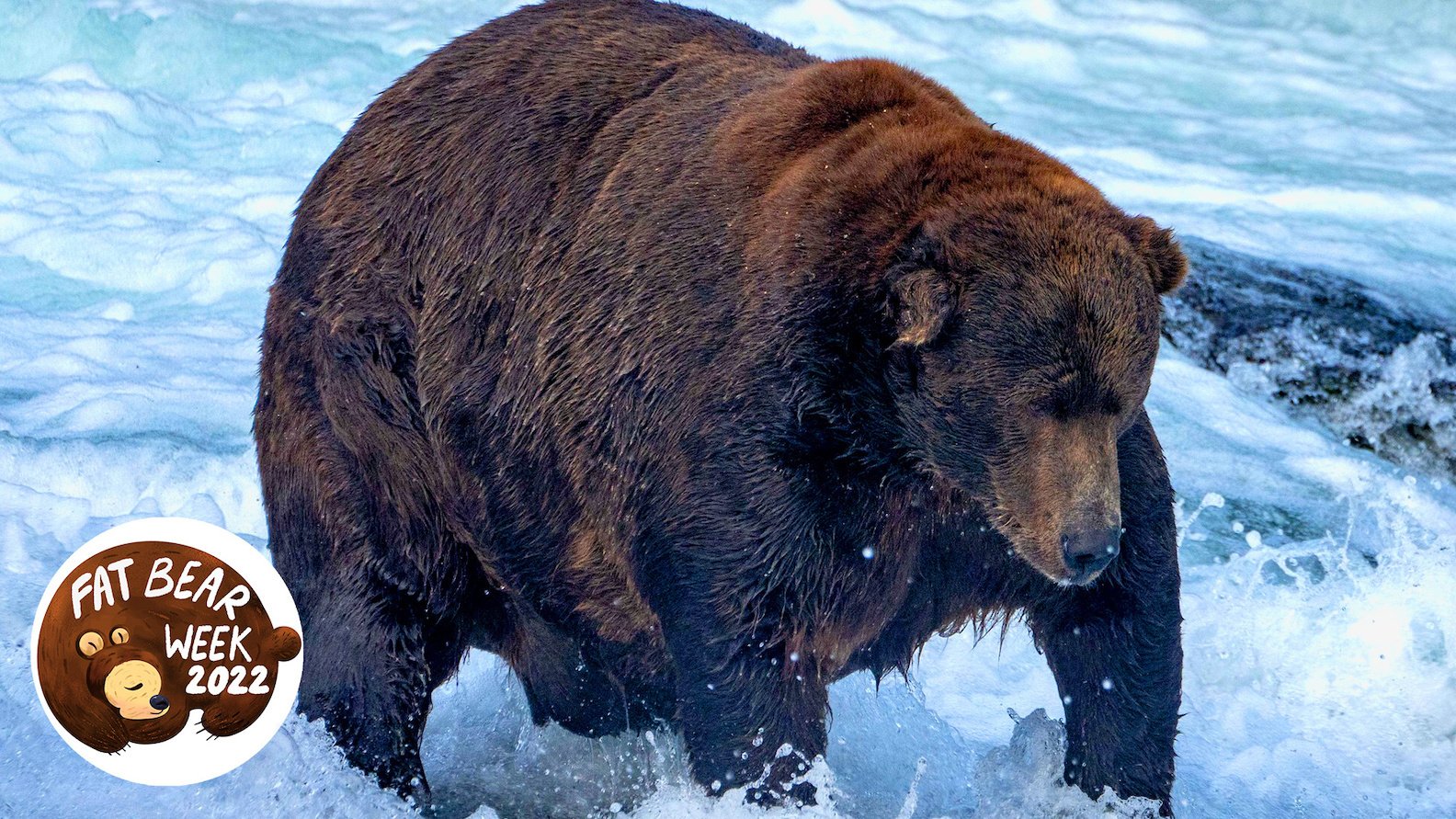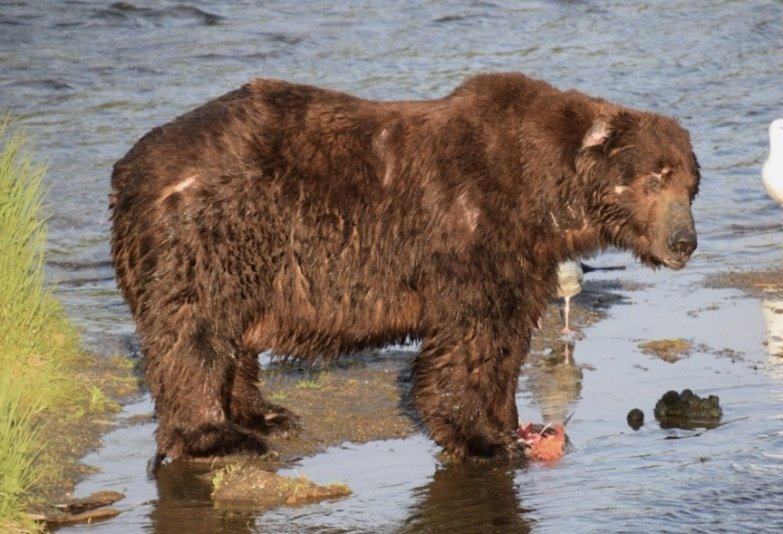
When bear 747 shows up, other bears capitulate. They move out of the way.
He’s that big. He’s that dominant. And in 2022, the voting public crowned him champion of Katmai National Park and Preserve’s Fat Bear Week, the park’s annual celebration of these animals’ success in the unforgiving wilderness.
747 defeated bear 901, an extremely bulky sow who upset many veteran fat bears during the week-long tournament. Indeed, the competition was particularly intense, from both former winners and younger contestants alike. But 747’s girth is unmatched.
A park ranger once described bear 747 as being “more hippopotamus than bear at times.” He’s the largest bear many Katmai viewers have ever seen (he tips the scale at some 1,400 pounds). He gobbled thousands of fish this summer. He grows so fat he has trouble walking. He’s even huge when he emerges from hibernation. He’s now a two-time Fat Bear Week champ. And at over 20 years old, the aging bear seems to be getting even larger.
“747 returns to Brooks River [where this population of bears feast on salmon] every summer as a giant and just keeps getting bigger,” writes Mike Fitz, a former Katmai park ranger and currently a resident naturalist for explore.org, the organization that livestreams the bears in the summer and fall. Fitz has watched 747 eat 15 large sockeye salmon (some 67,000 calories) over just a few hours.
For wild bears like 747, none of this is a joke. It’s survival. A fat bear is a healthy bear. These animals must subsist entirely on their fat stores for some six months during hibernation, when they attempt to outlast the long winter famine. Bears like 747 — who combine their size and fishing prowess — are often successful in this region of Katmai, a place with a biologically healthy ecosystem that teems with jaw-dropping runs of sockeye salmon.
A fat bear is a healthy bear.
Bear 747 has just a few months to really fatten up before the salmon run dies out, and winter looms large. During that time, he puts on hundreds and hundreds of pounds. The proof is in the pudding:

June 2022
Credit: Photo courtesy of C. Rohdenburg
September 2022
Credit: Photo courtesy of L. Law
Not just the fattest bear
Bear 747 has the distinction of not just being the fattest bear of Katmai’s salmon-rich Brooks River. He’s also the most dominant.
This means he sits atop the bear hierarchy. All other bears, even extremely large or assertive bears, will submit to 747’s dominion and cede prime fishing territory to him. This allows an already colossal bear to sustain, and amplify, his dominance. Because in the world of bears, size matters. Bear 747 isn’t the most aggressive bear. But his girth does the talking.
“Although dominant bears can maintain their rank in the hierarchy through aggression, 747 typically keeps his status by sheer size alone,” explains explore.org. “Most bears recognize they cannot compete with him physically and they yield space upon his approach.”
Last year, bear 747 deposed hyper-aggressive bear 856 (also a regular competitor in the annual Fat Bear Week contest) as the river’s most dominant bear. 856 had ruled the river for about a decade, so this was a significant shift in the fat bear hierarchy. On the livestreaming explore.org cameras, bear 747 approached and displaced bear 856 from a premier fishing spot. (Brown bears usually intimidate with bold posturing, as opposed to brawling and potentially hurting themselves.) Interestingly, bear 856 then started the summer of 2022 by asserting dominance over bear 747. For instance, 747 would yield space to 856.
“But by end of the summer, that reversed,” explore.org’s Fitz told Mashable. 856 began to cede territory to 747.
“None of this would happen without the fish.”
It’s an unphysical clash of two titans. But one that 747 is currently winning. “I don’t think they have ever tangled physically,” added Fitz. “It speaks to how familiarity is important. They know each other pretty well.” And they likely understand that a fight isn’t worth it.
After all, they’ve got much bigger fish to fry. Each sockeye salmon provides these bears with some 4,500 calories. Ultimately, they consume millions of calories over the course of summer and fall. And while the fat bears get all the internet fame, it’s really the salmon that run the show.
Each summer, tens of millions of sockeye salmon return to Alaska’s Bristol Bay. The state regulates the catch, meaning a certain number of fish must be allowed to “escape” up the rivers. Hundreds of thousands of fish eventually swim up Katmai’s protected Brooks River. It’s an ecosystem that, because it’s conserved, is able to flourish. The Katmai wilderness is firing on all cylinders. And the bears are the ultimate beneficiary.
“None of this would happen without the fish,” said Fitz.
